You’ve put in the hard work to set up your Etsy shop, your products look stunning, and you can already picture the orders rolling in. But reality doesn’t always match our dreams, right? What if those orders aren’t coming in like you hoped? Where are all the customers?

The truth is, even the best products need a little help to get noticed. That’s where Etsy SEO comes in.
Imagine having customers discover your beautiful creations just when they're searching for something special—that's the power of good SEO. And here’s the best part: improving your shop’s visibility doesn’t have to be overwhelming. Stick with me, and I’ll guide you through some easy, effective steps to make sure your products get the attention they deserve.
What is Etsy SEO?
SEO stands for Search Engine Optimization, and it’s all about making sure your products show up when people search for them on Etsy.
Here's how you can make that happen.
1. Use the right keywords
Keywords are the words and phrases customers type into Etsy’s search bar. If your product titles and descriptions match what they’re searching for, Etsy is more likely to show your listing.
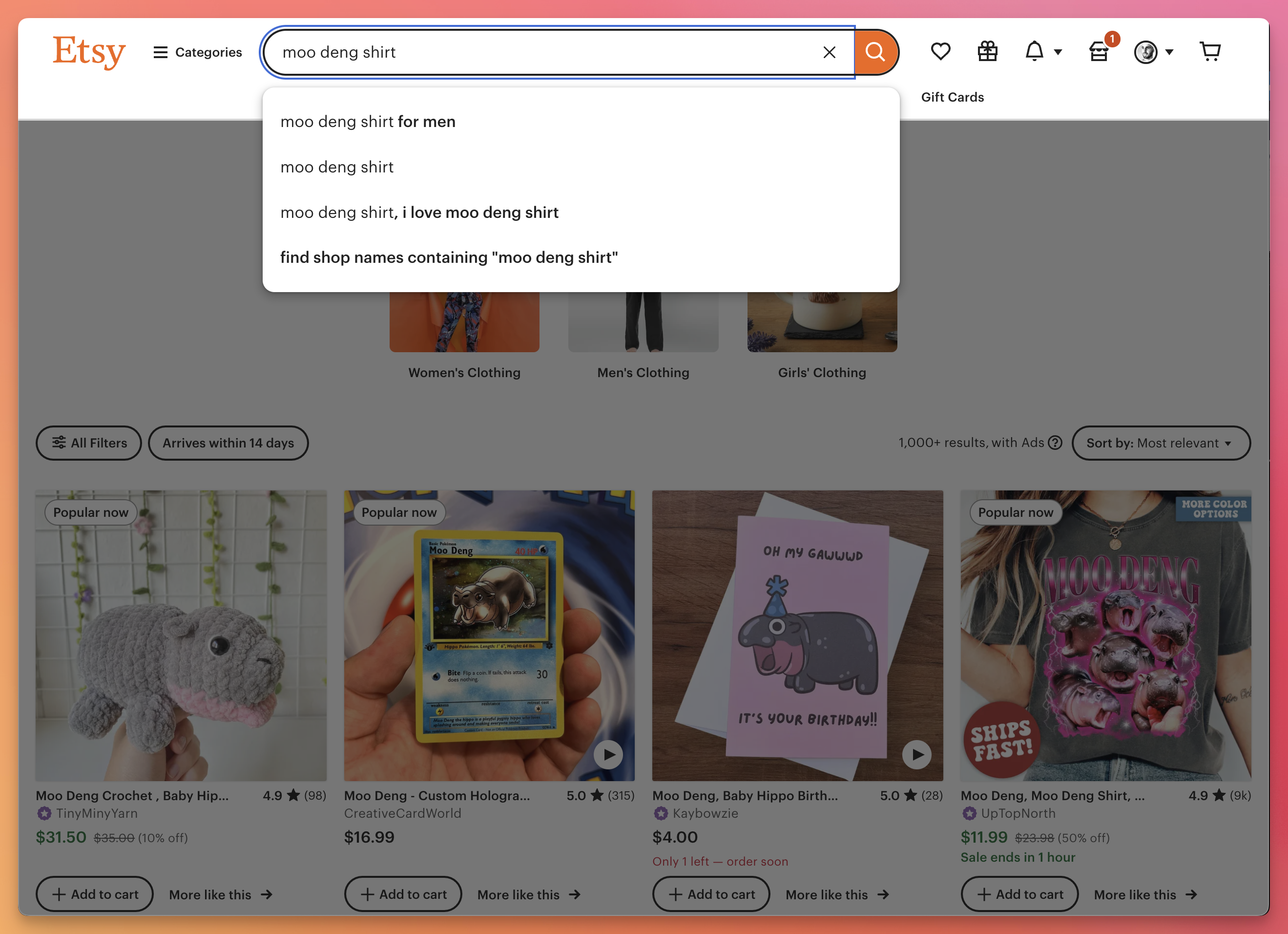
Here’s how to find the right keywords:
-
Think like your customer. What would you type in to find your product? Be specific! Instead of just “bracelet,” think about phrases like “handmade silver bracelet” or “boho beaded bracelet.”
-
Use Etsy’s search suggestions. Start typing a word related to your product, and see what popular search terms come up. These suggestions are clues to what customers are looking for.
-
Spy on your competition. Check out what keywords other successful shops are using for similar products.
Pro Tip: Use a keyword research tool like Listadum to help you find the right keywords with strong demand and lower competition, giving you an edge in search rankings.
2. Optimize your titles
Your titles are prime real estate for keywords. Lead with the most important keywords that best describe your product.
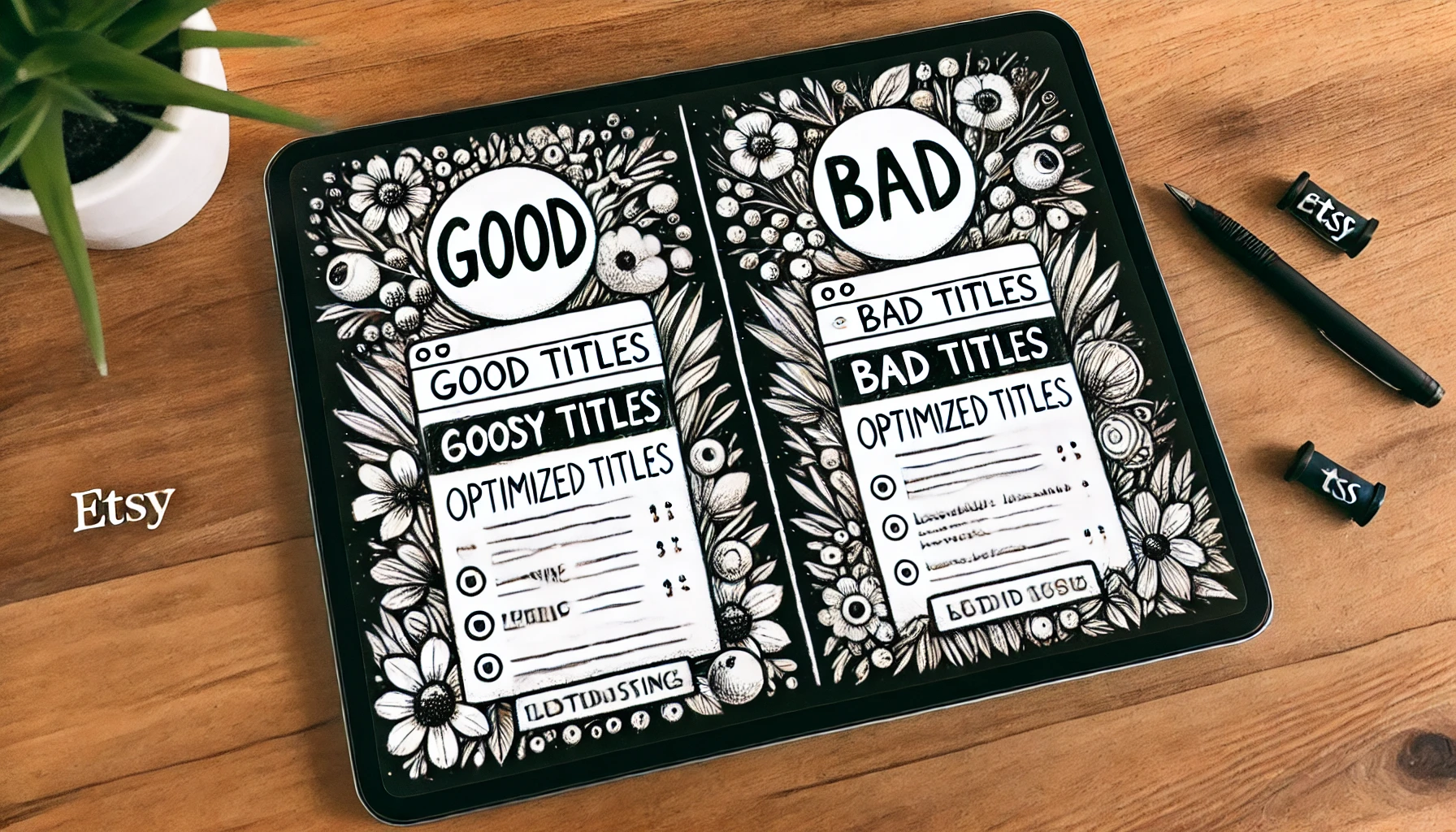
The first words matter the most because Etsy weighs them more heavily when ranking your listing.
Pro Tip: Users will only see the first 22-ish characters in search results, so make sure the title represents exactly what your item is.
For example, instead of writing a vague title like “Beautiful Handmade Necklace,” try something like “Boho Turquoise Beaded Necklace, Handmade Jewelry Gift.” This gives Etsy (and shoppers) a clearer idea of what you’re selling.
3. Make the most of tags
Tags are like keywords, but they’re hidden from shoppers and used by Etsy to categorize your listing. You get 13 tags per listing—use them all! Include a mix of broad and specific tags.
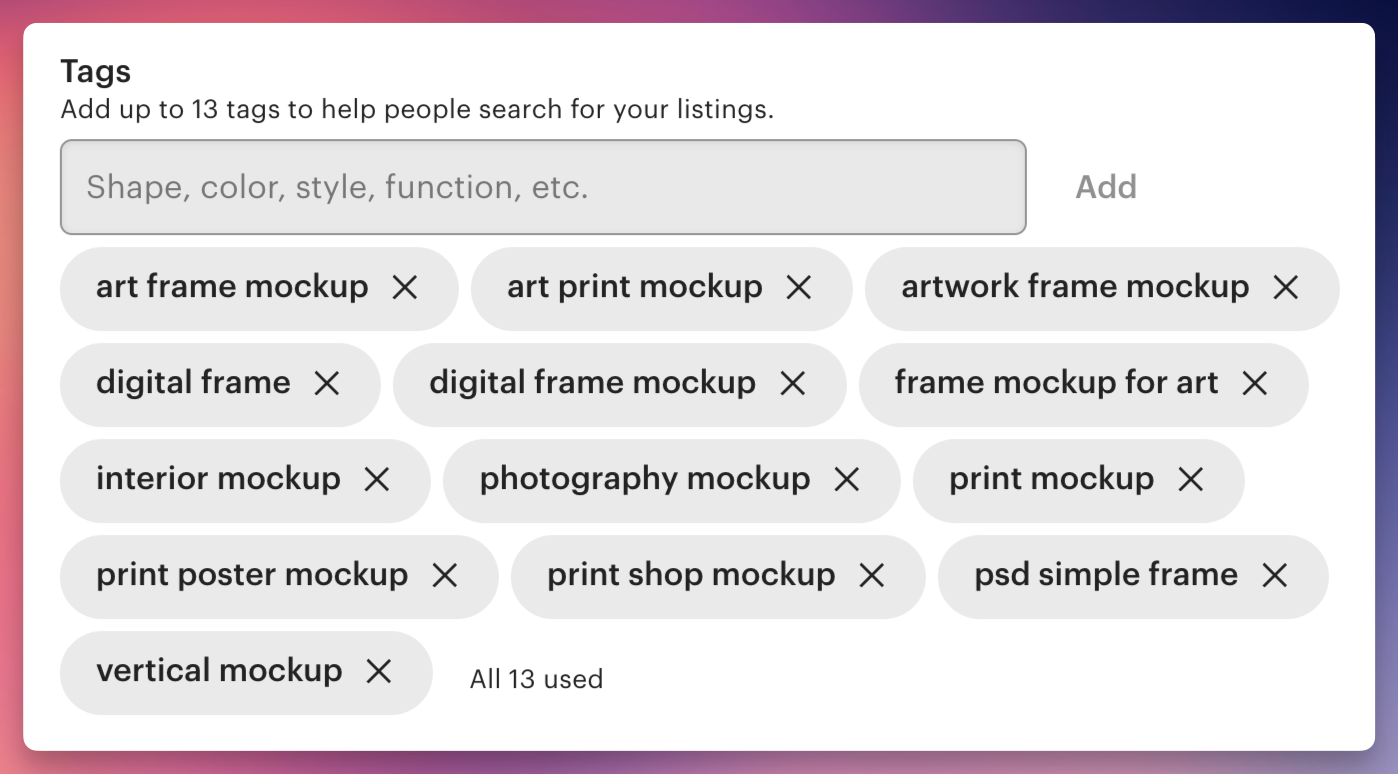
Pro Tip: Think about synonyms or related terms that customers might use to search for your product. This helps cover more search queries and increases your chances of being found.
For example, if you’re selling a macrame wall hanging, you might use tags like “macrame decor,” “boho wall hanging,” “handmade home decor,” and “woven wall art.” Think about what your customer might search for.
4. Write detailed descriptions
Descriptions aren’t just for shoppers—they help with your SEO too. Etsy scans descriptions for keywords, so make sure you’re using relevant terms naturally throughout your product description.
Include details like materials, colors, dimensions, and how it might be used. The more you help the customer imagine your product, the better.
Pro Tip: Start your description with the most important details. Many customers won’t read the entire description, so make sure the key selling points are clear right away.
Example: “This handmade macrame wall hanging adds a bohemian touch to your living space. Made with natural cotton rope, it’s perfect for a cozy bedroom, nursery, or as a statement piece in your living room.”
5. Use categories and attributes wisely
When listing a product, Etsy will ask you to select categories and attributes like color, size, or occasion. These choices help Etsy organize your products and show them to the right people.
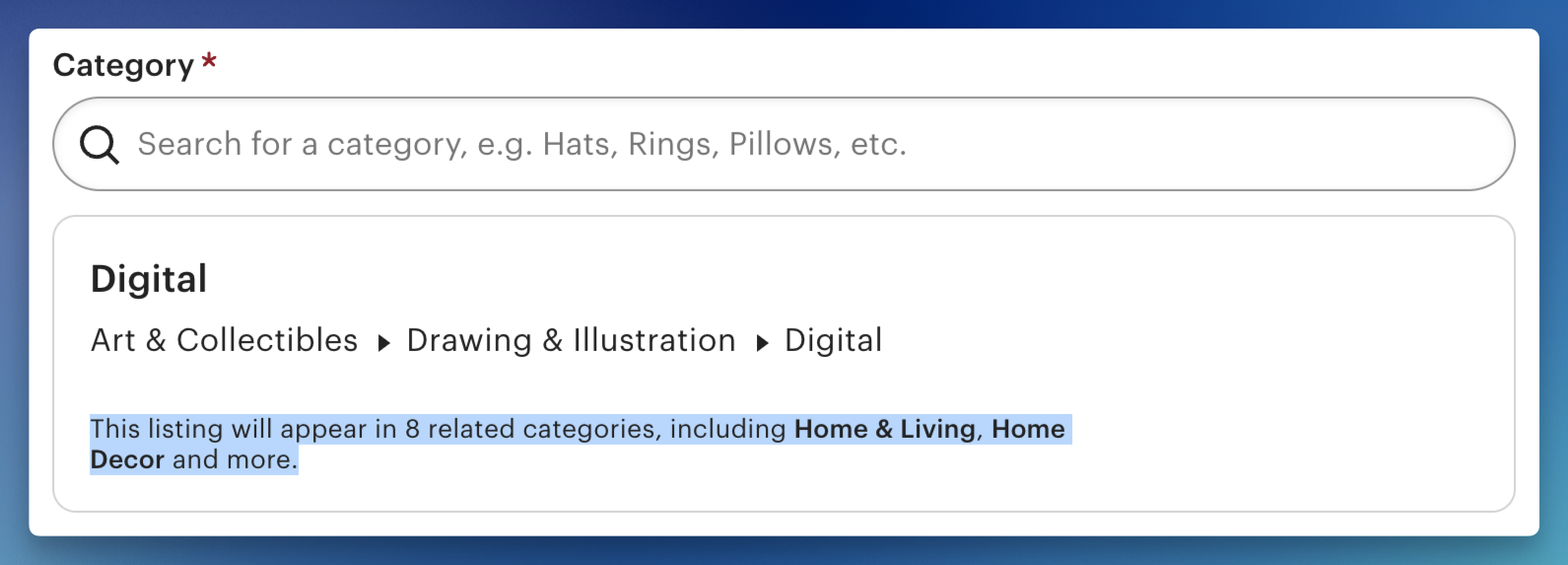
Pro Tip: Be as specific as possible when selecting categories and attributes. The more accurately you categorize your product, the better Etsy can match it to shoppers' searches.
For example, if you’re selling a handmade birthday card, choosing the category “Paper & Party Supplies” and the attribute “Birthday” will help Etsy show your card to people specifically searching for birthday-related items.
6. Promote your listings
Beyond SEO, you can boost your shop’s visibility with Etsy Ads or social media. Etsy Ads let you pay to feature your listings at the top of search results—this can be a great option when you’re just starting out to get some exposure.
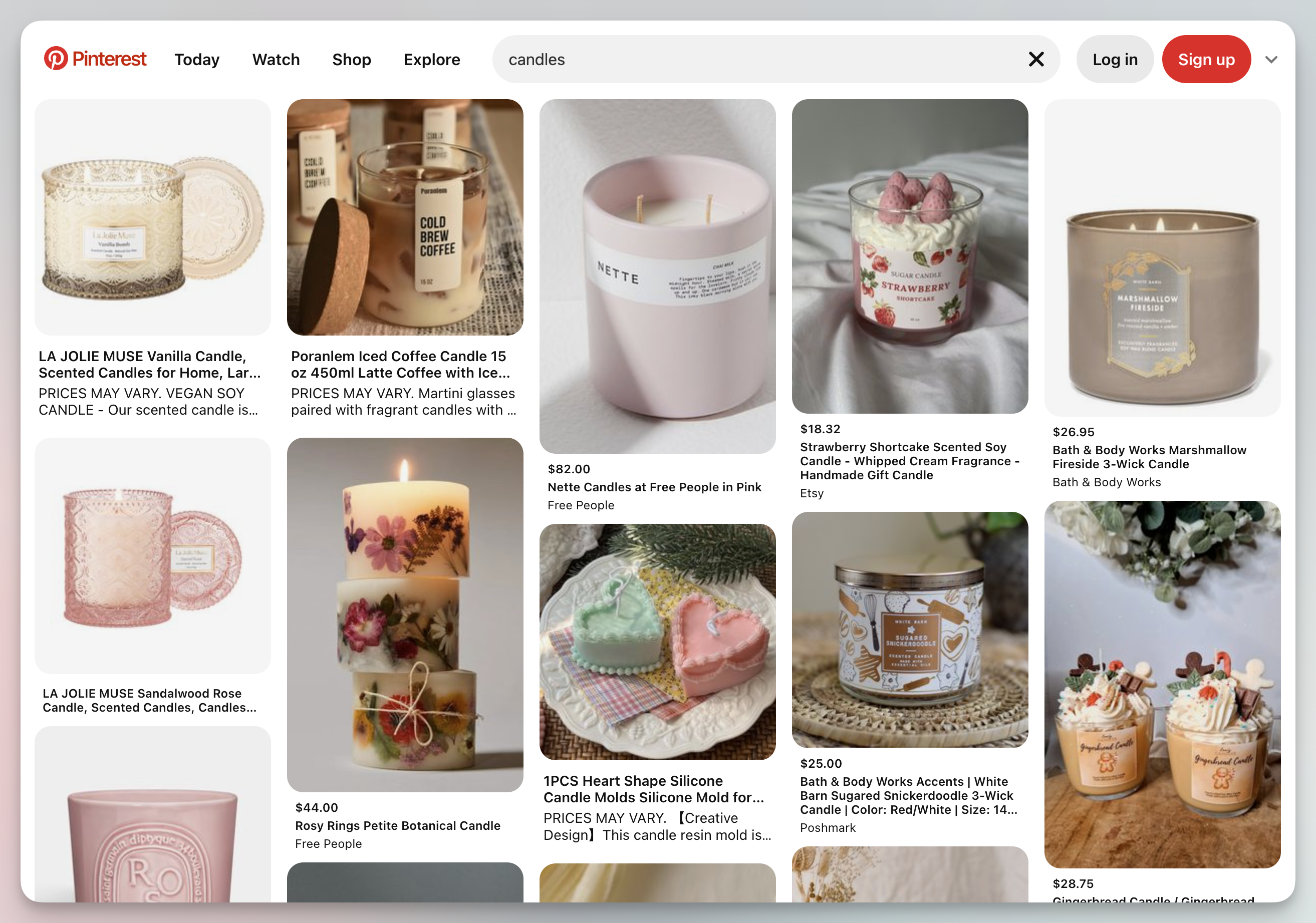
Pro Tip: Pinterest is particularly effective for Etsy sellers because it’s highly visual. Create eye-catching pins that link back to your products to drive more traffic to your shop.
Also, consider promoting your products on platforms like Instagram, Pinterest, or Facebook. Pinterest, in particular, is great for Etsy sellers because it’s so visual, and people often go there looking for ideas and inspiration.
7. Keep listings fresh
Etsy favors active shops. Update your listings regularly or add new products to keep your shop looking fresh. Even small updates—like refreshing photos, tweaking keywords, or editing descriptions—can signal to Etsy that your shop is active.
Pro Tip: Try experimenting with different keywords or photos for underperforming listings. Small tweaks can make a big difference in how often your products get seen.
If some of your listings aren’t getting many views, try experimenting. Adjust the title, try different keywords, or update the photos to see what works best.
Getting your products to show up at the top of Etsy’s search results takes some effort, but it’s absolutely worth it. By making small SEO improvements to your listings, you’ll start to see more visibility for your beautiful creations.
It’s all about using smart strategies to connect with the right customers. With patience and consistent effort, you’ll attract more buyers and watch your shop thrive.
What's next for you?
Now that you know how to improve your Etsy SEO, it’s time to put these tips into action. Start by choosing one area—like optimizing your titles or refreshing your tags—and make a small change today. Track your results, keep experimenting, and don’t be afraid to tweak your approach as you learn what works best for your shop. Remember, SEO is an ongoing process, and every improvement brings you closer to more customers and more sales.
You've got this—happy selling!
FAQ
Q: How do I find the right keywords for my Etsy listings?
A: Start by thinking like your customer—what would you type in to find your product? Be specific and use phrases like “handmade silver bracelet” instead of just “bracelet.” You can also use Etsy’s search suggestions and look at the keywords your competitors are using.
Q: How many tags should I use for each listing?
A: Use all 13 tags that Etsy provides. Make sure to include a mix of broad and specific tags that accurately describe your product. This helps Etsy categorize your listing and show it to the right customers.
Q: How often should I update my listings?
A: Etsy favors active shops, so it’s a good idea to update your listings regularly. Even small changes like updating photos, tweaking keywords, or editing descriptions can make a difference. Adding new products is also a great way to keep your shop fresh.
Q: Do I need to use Etsy Ads to get my listings seen?
A: Etsy Ads can be helpful, especially when you’re just starting out, but they’re not required. Optimizing your listings with the right keywords, tags, and descriptions can significantly improve your visibility without ads.
Q: What role do product descriptions play in SEO?
A: Product descriptions help Etsy understand what you’re selling. Make sure to include relevant keywords naturally, and provide details like materials, colors, dimensions, and uses. A detailed description not only helps with SEO but also helps customers imagine your product.
Q: How can I promote my Etsy shop outside of Etsy?
A: Social media platforms like Instagram, Pinterest, and Facebook are great for promoting your Etsy shop. Pinterest, in particular, works well because it’s a visual platform where people often look for inspiration and products.